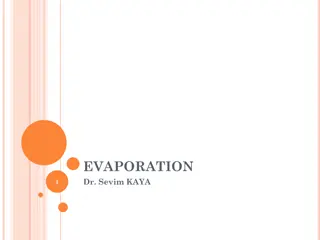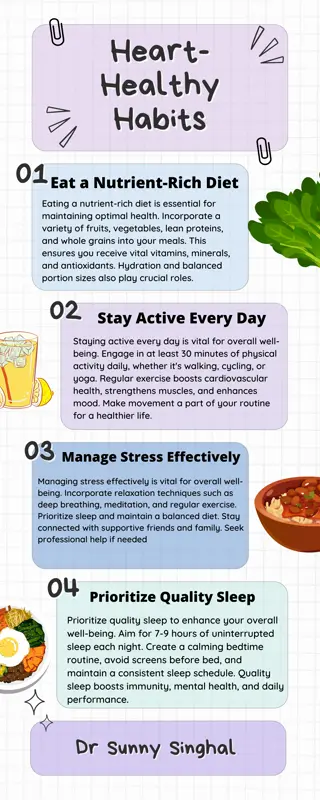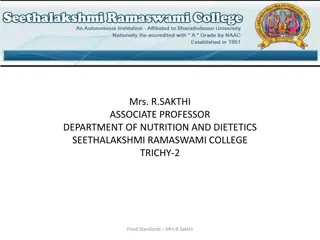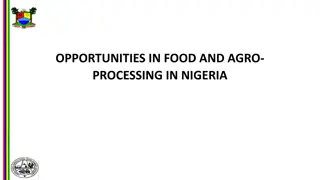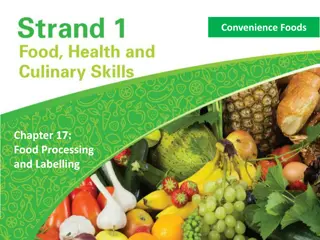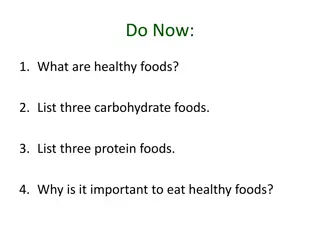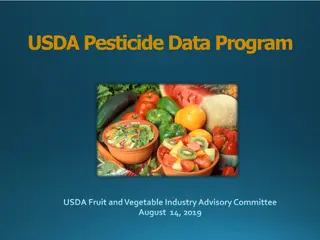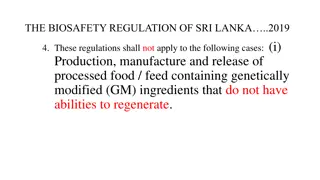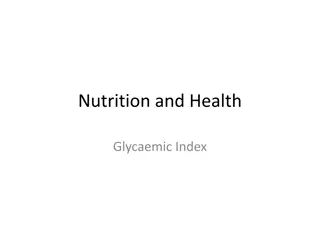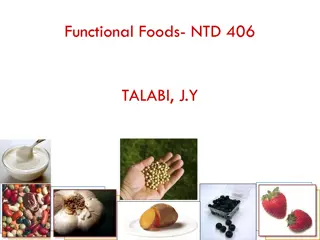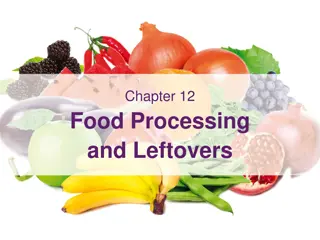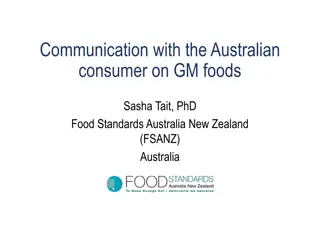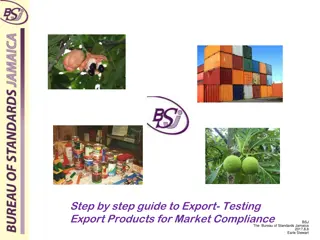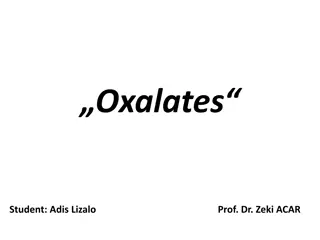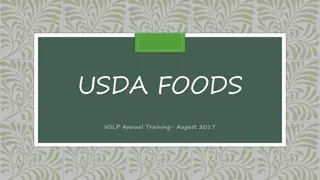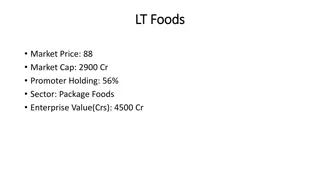Exploring Types of Convenience and Processed Foods
Convenience and processed foods offer time-saving benefits, ease of storage, and convenience for meal preparation. They come in various forms such as canned/bottled, frozen, and dried foods, each with specific advantages and preparation methods. Understanding these types of foods can help in making informed choices for a balanced diet.
Download Presentation

Please find below an Image/Link to download the presentation.
The content on the website is provided AS IS for your information and personal use only. It may not be sold, licensed, or shared on other websites without obtaining consent from the author. Download presentation by click this link. If you encounter any issues during the download, it is possible that the publisher has removed the file from their server.
E N D
Presentation Transcript
Understanding Ingredients Convenience / Processed Food
Topics Types of Convenience / Processed Food Nutritive Value of Convenience / Processed Food Choice and Storage of Convenience / Processed Food Food and Nutrition Labelling of Convenience / Processed Food 2
Types of Convenience / Processed Food 3
Types of Convenience / Processed Food Convenience foods are foods which have been prepared or partially prepared They help to make cooking and serving easier and quicker Some convenience foods are ready to eat The advantages of convenience foods: Saves time Saves fuel and waste Easy to store Ready for use when the food is not in season 4
Types of Convenience / Processed Food Convenience foods may be grouped into three main types Canned or bottled Frozen foods Dried foods 5
Types of Convenience / Processed Food Canned or bottled foods Some of them are ready-to-eat from can or bottle Some of them require to be heated, diluted, or reconstituted Before foods are being canned or bottled, they must be heated under appropriate conditions, such as time, temperature, and pressure Foods are heated because it will: inactivate microorganisms decrease chemical damage terminate enzyme activities reduce physical changes 6
Types of Convenience / Processed Food Frozen foods Some frozen foods are ready-to-eat, some require thawing, still some require cooking Freezing involves the crystallization of water in food which requires the removal of latent heat The temperature decreases in food affects microorganisms activity Freezing influence important quality attributes of food, such as texture, colour, flavour, and nutrient content 7
Types of Convenience / Processed Food Dried foods Some dried foods require to be reconstituted with water or other ingredients, some require to be cooked In some foods that have relatively low solids contents, it is desirable to increase the solids content of such liquids A common way is to evaporate some of the water by the application of heat When foods are dried, their mass and volume will decrease, which help to: produce concentrated liquid products (for sale to the consumer) preconcentrate liquids for further processing reduce the cost of transportation, storage, and packaging 8
Nutritive Value of Convenience / Processed Food 9
Nutritive Value of Convenience / Processed Food The macro-nutrients and minerals in convenience foods are not affected by food processing Convenience foods have less dietary fibre than fresh foods Vitamin B complex and vitamin C are lost in canning, bottling and drying 10
Choice and Storage of Convenience / Processed Food 11
Choice and Storage of Convenience / Processed Food Choosing convenience / processed Food Check the expiry date Cans should not be bulging, dented, or rusty Bottles and packets of dried foods should be completely sealed and not opened Frozen foods should not have signs of re-freezing, e.g. with large pieces of ice crystals 12
Choice and Storage of Convenience / Processed Food Storing convenience / processed Food Store canned, bottled and dried foods in dry, ventilated cupboards Store frozen foods in the freezer Use according to the expiry date 13
Food and Nutrition Labelling of Convenience / Processed Food 14
Food and Nutrition Labelling of Convenience / Processed Food Labelling of convenience / processed food is controlled in Hong Kong legislation: List of ingredients Pre-packaged food shall be legibly marked or labelled with a list of ingredients List of allergenic substance If a food consists of or contains any of the following substances Cereals containing gluten (namely wheat, rye, barley, oats, spelt, their hybridized strains and their products); Crustacea and crustacean products; Eggs and egg products; Fish and fish products; Peanuts, soya beans and their products; Milk and milk products (including lactose); Tree nuts and nut products Sulphite in a concentration of 10 parts per million or more The name of the following substances shall be specified in the list of ingredients 15
Food and Nutrition Labelling of Convenience / Processed Food Labelling of convenience / processed food is controlled in Hong Kong legislation: Appropriate durability indication Indication of best before or use by date Nutrition labelling Pre-packaged food shall be marked or labelled with its energy value and nutrient content Nutrition claim If any nutrition claim is made on the food label or in any advertisement, the nutrient in concern shall be marked or labelled in the nutrition labelling 16
References Conforti, F. D. (2008). Food selection and preparation: a laboratory manual. Ames, IA: Wiley-Blackwell. James G. Brennan and Alistair S. Grandison. Food processing handbook. Weinheim: Wiley-VCH; c2012. Vickie A. Vaclavik, Elizabeth W. Christian. Essentials of food science. New York, NY: Springer, c2008. 17



